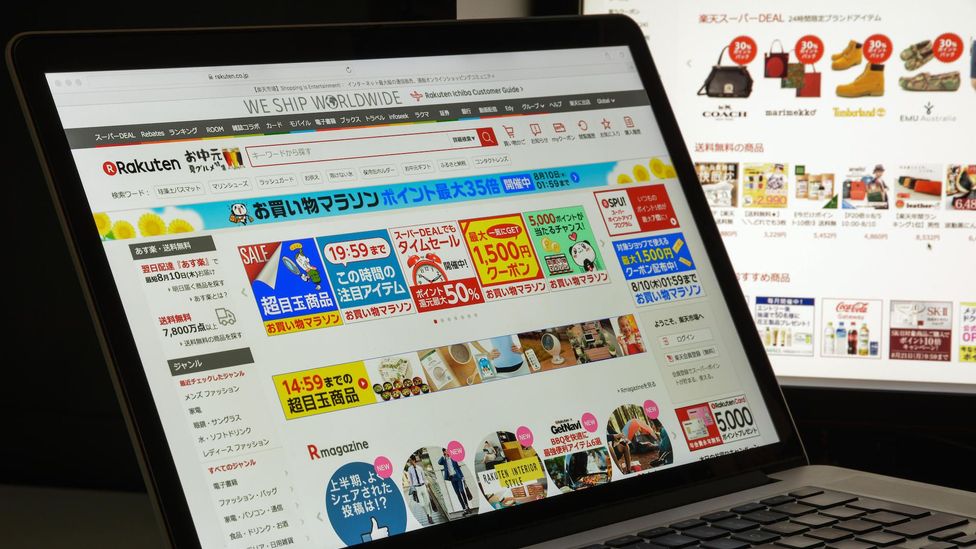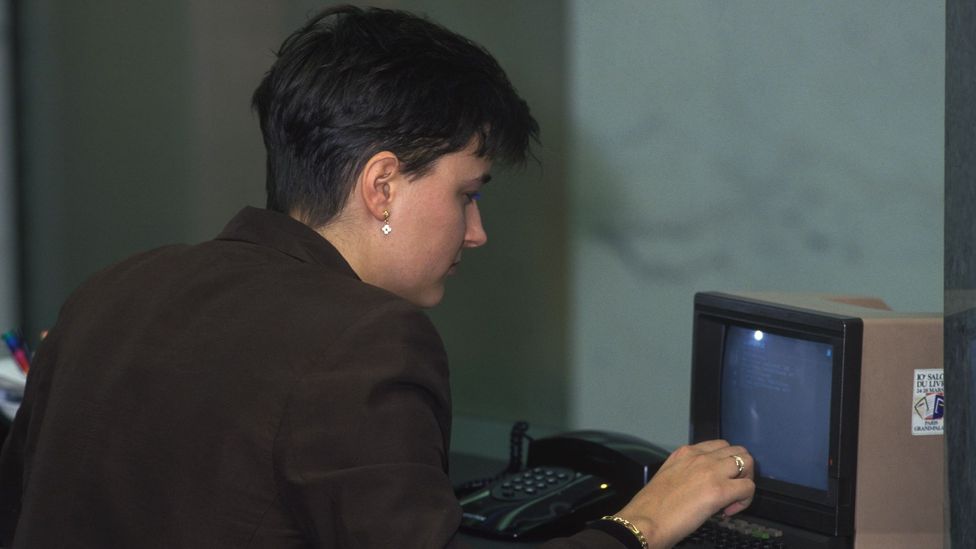How many times have you clicked ‘check-out’ to buy something in the last few months? If the spike in online sales amid Covid-19 is any indicator (or, perhaps, the list of merchants on your last credit card statement), it’s probably a lot.
Groceries, books, beauty supplies, inflatable children’s pools as the pandemic persists, we have relied on ecommerce to get things to our doors, contact-free and fast. These things range from essentials to not-so-quite essentials: in Canada in April, online shoppers trapped at home were scooping up canned quail eggs, sitar strings and trampolines for the kids.
From panic buying and hoarding, we already know that the stress of the pandemic can break our brains and morph our buying habits. However, even though online shopping has been around for years – actually, decades – it’s only become truly mainstream recently. Amazon has been around since the mid-’90s, but by even 2010 in the US, online shopping only made up just more than 6% of all retail sales.
And now? Internet sales as a total percentage of sales in the UK rocketed from 2.8% in November 2006 to 18.9% in February 2020 – and then shot up again to 30% in April 2020 because of the pandemic. In May 2020, sales from “non-store retailers” in the US were up 30.8% from May 2019.

Before Covid-19, relying on the internet for shopping hadn’t been so ingrained in our day-to-day lives. A couple of decades ago, online shopping was a novelty, just as the internet itself still was. Most people were only buying hard-to-find records or obscure action figures on eBay.
So how did we get to the point where online shopping became a way of life? And where will it guide us in the post-pandemic future?
Where we began
In 1984, in Gateshead, England, a 72-year-old grandmother named Jane Snowball sat down in her armchair and used her television remote control to place an order of margarine, cornflakes and eggs.
She used the ‘Videotex’ system developed by English inventor Michael Aldrich, says Jonathan Reynolds, associate professor in retail marketing and deputy dean of Oxford University’s Saïd Business School. Aldrich took her TV and turned it into a computer terminal: she used the Videotex technology to generate a shopping list on her TV screen, and her order was phoned in to her local Tesco. The goods were then sent to her door, like magic.
In 1994, US chain Pizza Hut started selling pizzas online through their early ‘PizzaNet’ portal – an ancient-looking flat, grey website
“It was originally conceived as a social service [for the elderly and disadvantaged],” says Reynolds. “The system, which pre-dated the public Internet, relied upon the development of a closed network of computers.” Little did Aldrich or Snowball know that their nifty tech experiment laid the framework for an industry now worth £118bn ($186bn) in the UK.
Following this early grocery service, the next major innovation in the online shopping space is said to have occurred in 1994, when a computer whiz called Daniel M Kohn, then aged 21, set up an online marketplace called NetMarket. It was not only dubbed a “new venture that is the equivalent of a shopping mall in cyberspace”, but also marked the first digitally secure transaction. The first purchase? A Sting CD, retailing at $12.48 (£10).
From then, the early internet – with its screeching dial-up sounds – trickled its way into people’s homes. And while today virtually all big corporations are online, in the early days only a few committed to an ecommerce strategy.
One of those was Pizza Hut. In 1994, the US chain started selling pizzas online through their early ‘PizzaNet’ portal – a flat, grey website that looks as ancient as you may expect, with fields only for a customer’s address and phone number.
But 1994 was also a watershed year for online shopping: it’s the same year Amazon launched – which, at that time, sold mostly books. eBay followed in 1995. Rakuten, Japan’s biggest ecommerce site that’s expanded into Western markets the past few years, launched two years later. China’s Alibaba, in 1999. These companies were setting the stage for an online shopping transition: a wide variety of offerings, consumer accessibility and innovative technology.

Mid-1990s globalisation was also a major catalyst that “made ecommerce a viable and highly profitable selling channel”, says Thomaï Serdari, adjunct professor at New York University’s Stern School of Business. The connected world enabled production to scale up quickly and significantly, for products at many price tiers. “Consumers were eager to find either the best or the most acceptable quality product at the prices they could afford. The internet gave them the tool to conduct extensive research before purchasing an item. It also gave them the insights on how to evaluate the price-to-value ratio and finally the means to purchase.”
While early trailblazers such as Amazon and eBay – which dominate the industry today – provided the platform for online shopping, Serdari says it was really the consumer shift in behaviour that led to online shopping taking off. “It was actually consumers who embraced this type of marketplace as a democratised way to consume,” she says.
Gaining steam
A real inflection point for online shopping as we know it today could be traced to around 2017. By the end of the prior year, many Americans were “starting to shop online as often as [they] take out the trash”; according to the Pew Research Center, eight in 10 Americans used a computer or phone to buy something online that year – as opposed to the just 22% who did so in 2000. More phones in consumers’ hands helped facilitate the jump as smartphone penetration hit 80% worldwide by 2017.
Between March 2020 and April 2020 in the US, ecommerce sales jumped 49%, led by online grocery with a 110% boost in daily sales
Now, data from 2019 shows that ecommerce comprises 16% of sales in the US. That represents $601.75bn (£489bn) of spending. Shopify, a global ecommerce software giant, reported that worldwide, online sales topped $3.5tn (£2.8tn) the same year. In the US, those numbers in the first quarter of 2020 (before the pandemic) rose more than 14% from the same period in 2019.
But 2020 has changed not only the importance of online shopping – but significantly accelerated its growth. Barbara Kahn, marketing professor at the University of Pennsylvania’s Wharton School of Business, says that the pandemic has accelerated online shopping adaptation by two to three years.
And, what’s led to surges in online sales numbers is the very thing that Jane Snowball herself first ordered via her remote: groceries. Between March 2020 and April 2020 in the US, ecommerce sales jumped 49%, led by online grocery with a 110% boost in daily sales. Kahn says that ecommerce has finally reached the kind of high penetration (the kind that makes more sense relative to its age) because people have turned to the internet to buy food.
“It’s interesting with Covid, because groceries didn’t have a high penetration [in online shopping],” she says. She contrasts that to online shopping’s earlier days, where people may have used it to buy books or electronics like computers. “Not everybody buys computers, but everybody buys groceries.”

Here to stay?
The online shopping landscape hasn’t only changed due to accelerated adoption of ecommerce as well as a massive jump in merchants offering online shopping out of necessity. (“About 30% of businesses sell online, but Covid-19 forced many more retailers to try ecommerce as a means to survival,” says Serdari.)
But it’s a necessity that’s also done from the comfort of our own homes, and easier to do nowadays since more grocers and stores have adopted online ordering, door-side delivery or kerbside pick-up (click-and-collect). “That convenience has really elevated online shopping,” adds Joy Lu, an assistant professor of marketing who specialises in consumer psychology at Carnegie Mellon University in the US state of Pennsylvania.
Still, despite these positive signs for the future of online shopping, consumers have closed up their wallets due to the pandemic, even though there’s a post-coronavirus surge in procuring what people do want and need online.
The lingering question is whether online shopping will maintain steady – or even meteoric – growth when consumers can head back to High Street shops.
There may also be a rise in hybrid “omnichannel” shops, says Kahn, refers to companies like Amazon that combine online shopping and physical storefronts with services like Amazon Go. The company tracks your online purchasing habits and has groceries ready to go for pick up at a physical shop as you’re on your way home from work.
And after the pandemic? While online shopping started out as a requirement amid social distancing measures and contagion fears, there may be no going back from the new normal of retail – especially now that customers see how doable, easy and fast it is, now that they’ve been forced to do it.
“People are less patient,” Kahn says. “There’s been a change in expectations.”
Credit: Source link